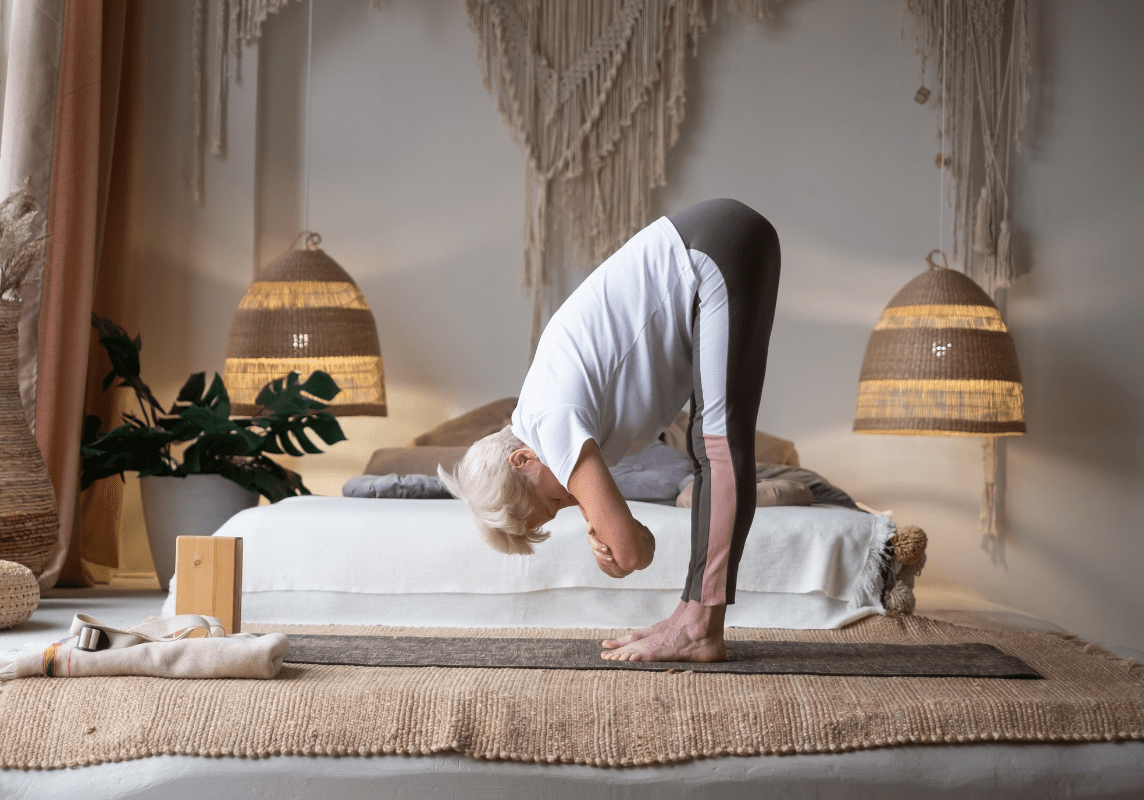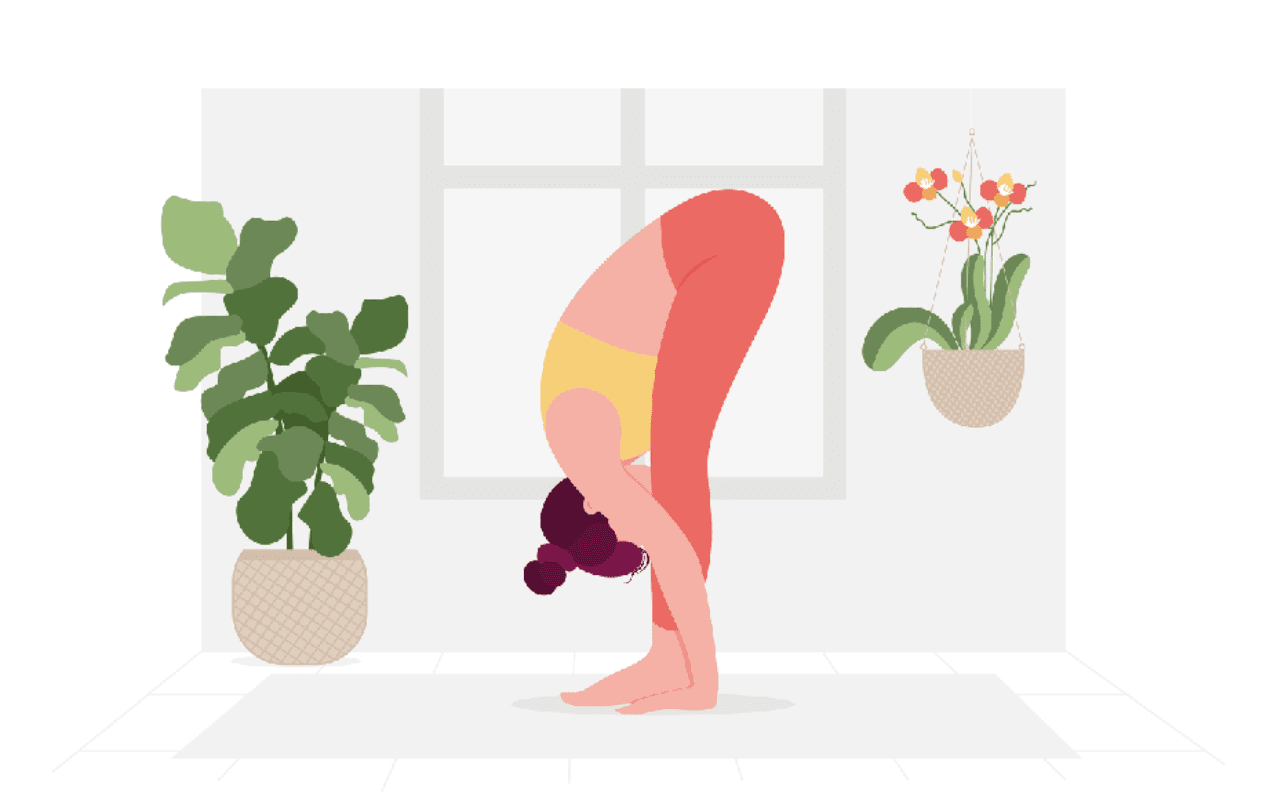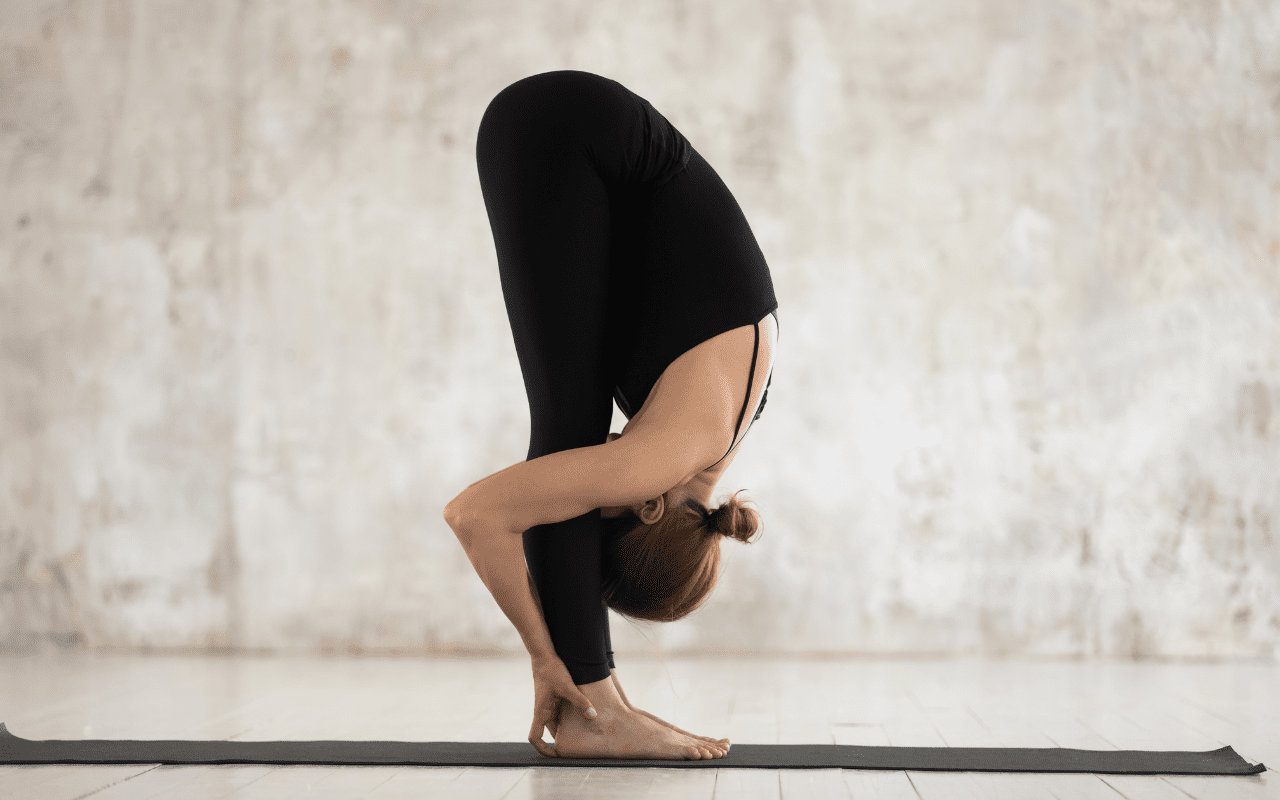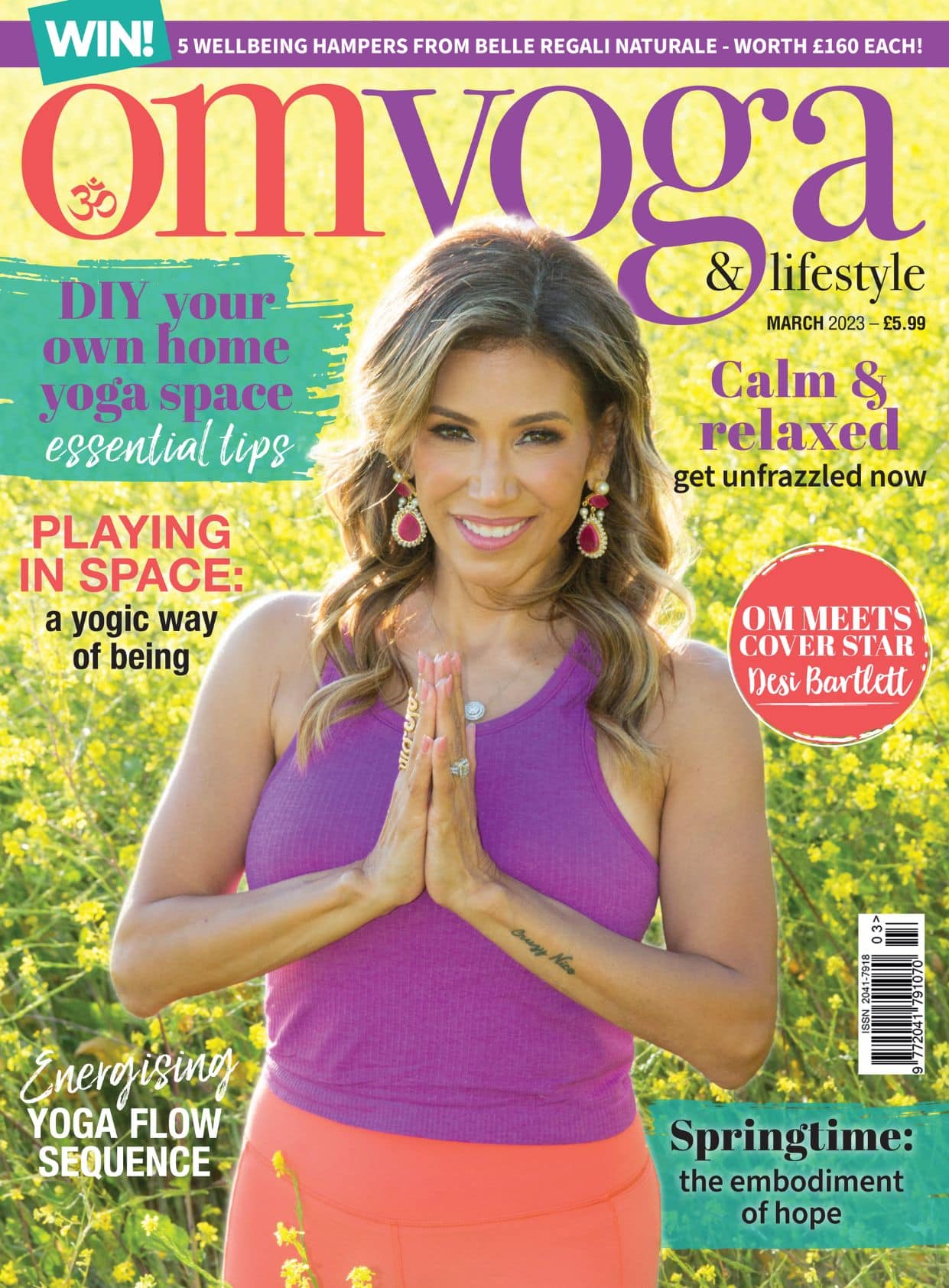
Uttanasana: the ultimate blues-busting asana
Why Uttanasana, or standing forward bend, should be first on your must-do list of poses. By Diane Ashfield
Forward bending is a movement we use on a daily basis, whether it's working in the garden, emptying the dishwasher or picking up something from the floor. Generally, most people bend down and come up again using their backs rather than their legs, which can place undue pressure on their spine – this, in time, can lead to inflammation and lower back pain.
To keep the lower back safe, always bend the knees and use the strength in the legs as you bend forward, and again bending them to come up to standing – this is something we do in yoga again and again so that eventually it becomes a natural and automatic movement whenever we bend down or stand up – even when we're not practicing yoga.
In Sanskrit, 'ut' means intense, 'tan' means stretch and 'asana' means pose, so basically Uttanasana means 'Intense Stretch Pose', but it's usually known as the standing forward bend. However, I like to think of it as The Blues-Busting Forward Bend as it is such an easy beginner's asana to perform, yet has an array of benefits to the body as well as the mind.
I particularly promote Uttanasana and its variations in class for strengthening the hamstrings, calves, thighs and spine, but I find that this pose, like all inversions, is also wonderful for lifting our spirits – something we could all do with to help us through the more difficult days. This is because while we are upside down, the blood gravitates towards the head, increasing oxygen levels in the brain, which has a rejuvenating effect on the body.
To perform Uttanasana: feet are hip-distance apart, hands on hips, spine is tall, shoulders back and down. Breathe in, on the out-breath bend the knees. Breathe in again and on the out-breath slowly fold forward, and keeping the knees bent and the spine long, keep folding forward until your torso touches your thighs. Release the hands to the feet, calves, shins, block(s) or the floor. Tuck the head close towards the knees if available, then on an out-breath lift the bottom up towards the ceiling and work towards straightening the legs.

When coming into an intense stretch, we tend to 'hold' or tighten certain muscles, so tune into your body and release any muscles that you feel you might be tensing – usually the stomach muscles and the muscles behind the knees. Release these muscles as you breathe out – see if you can relax a little further into the pose – let everything go! Stay for 30 seconds, or a little longer if it feels good.
Remember not to force the body and work to your measure – the head doesn't have to be close to the knees, and the legs don't have to be straight. If anything feels uncomfortable, or if you feel dizzy, breathe and slowly come up. Also, listen to your breath: if the breath becomes laboured, then you are working too hard. Should you suffer from any blood pressure issues, keep your head higher than your heart, plus Uttanasana isn't recommended for anyone suffering from a back or neck injury, severe migraine, or during pregnancy.
It's important to always come out of Uttanasana in reverse: bend the knees, press down into the feet, breathe and slowly come up, leading with the chest, using the strength in the legs and keeping the legs bent until you are almost upright. Shake or stretch anything that feels good, and then come into gardener's pose – this is a gentle back bend to ease ourselves out of an intense forward stretch. Bend your elbows and place your hands on the lower back with your fingers pointing towards the floor. Breathe, press into the feet, lift the chest and on the out-breath encourage the hips forward a little (they don't have to go very far), and keeping the chest lifted, work the elbows towards each other. Stay here for a few nice, deep, easy breaths.
BKS Iyengar mentions the benefits of Uttanasana in 'Light on Yoga': "This asana cures stomach pains and tones the liver, the spleen and the kidneys. It also relieves stomach pain during menstrual periods. The heart beats are slowed down and the spinal nerves rejuvenated. Any depression felt in the mind is removed if one holds the pose for two minutes or more. The posture is a boon to people who get excited quickly, as it soothes the brain cells. After finishing the asana, one feels calm and cool, the eyes start to glow and the mind feels at peace."
"Remember not to force the body and work to your measure – the head doesn't have to be close to the knees, and the legs don't have to be straight."
Uttanasana has a number of variations, but there are two which I especially like to use as a sequence in class. The first is Padangusthasana ('pada' is foot and 'angustha' means big toe). This posture is basically the same as Uttanasana but catching hold or wrapping the index fingers around the big toes, bend the elbows and use your arms to encourage the body closer to the thighs. The other is Padahastasana ('pada' being foot, 'hasta' meaning the hands). Again, the same as before, but this time standing with the hands under the feet, with the backs of the hands on the floor. This might feel a little uncomfortable if you are wearing large, bulky rings, so maybe remove these beforehand. Press your feet down into your hands, and pull your arms up as if you are trying to free the hands from the feet – keep some sort of resistance going.

Although Iyengar mentions that Padahastasana is more strenuous than Padangusthasana, the benefits of both poses are the same: "The abdominal organs are toned and digestive juices increase, while the liver and spleen are activated. Persons suffering from a bloating sensation in the abdomen or from gastric troubles will benefit by practicing these two asanas."
After performing Uttanasana, notice how your body feels – probably pretty awesome. Your legs feel alive, your spine feels nicely stretched and you feel remarkably calm. Maybe you should take a look in the mirror, because there's a good chance that your eyes are glowing!
Uttanasana benefits
• Eases stiffness and tension in the back and neck
• Improves posture
• Increases hip flexibility
• Stretches and tones the hamstrings and calf muscles
• Relieves stress, and is especially beneficial in easing stress-related headaches
Caution: Uttanasana isn't recommended for anyone suffering with a back or neck injury, severe migraine or during pregnancy. Should you suffer from blood pressure issues, keep your head higher than you heart, or consult a physician before attempting this pose to check that it is suitable for you.




